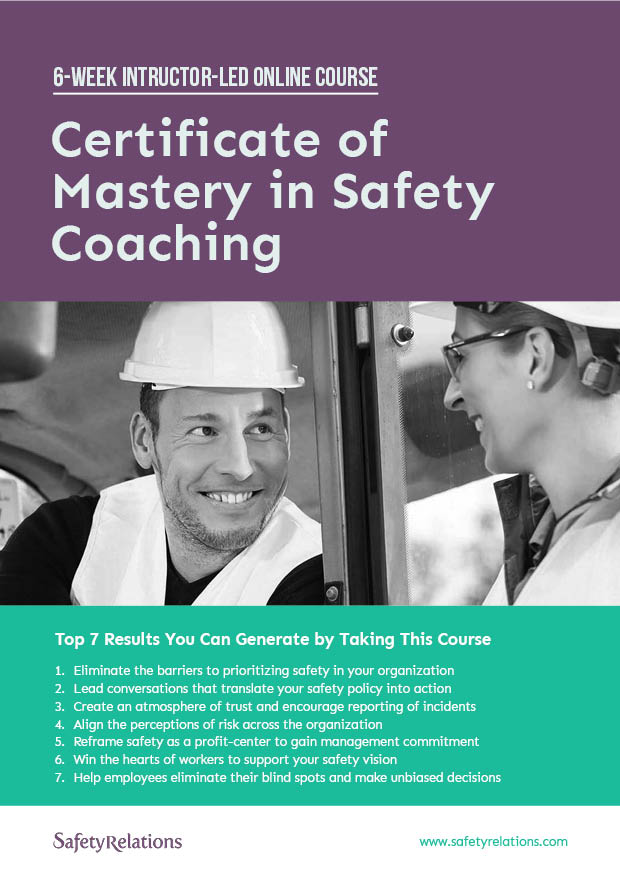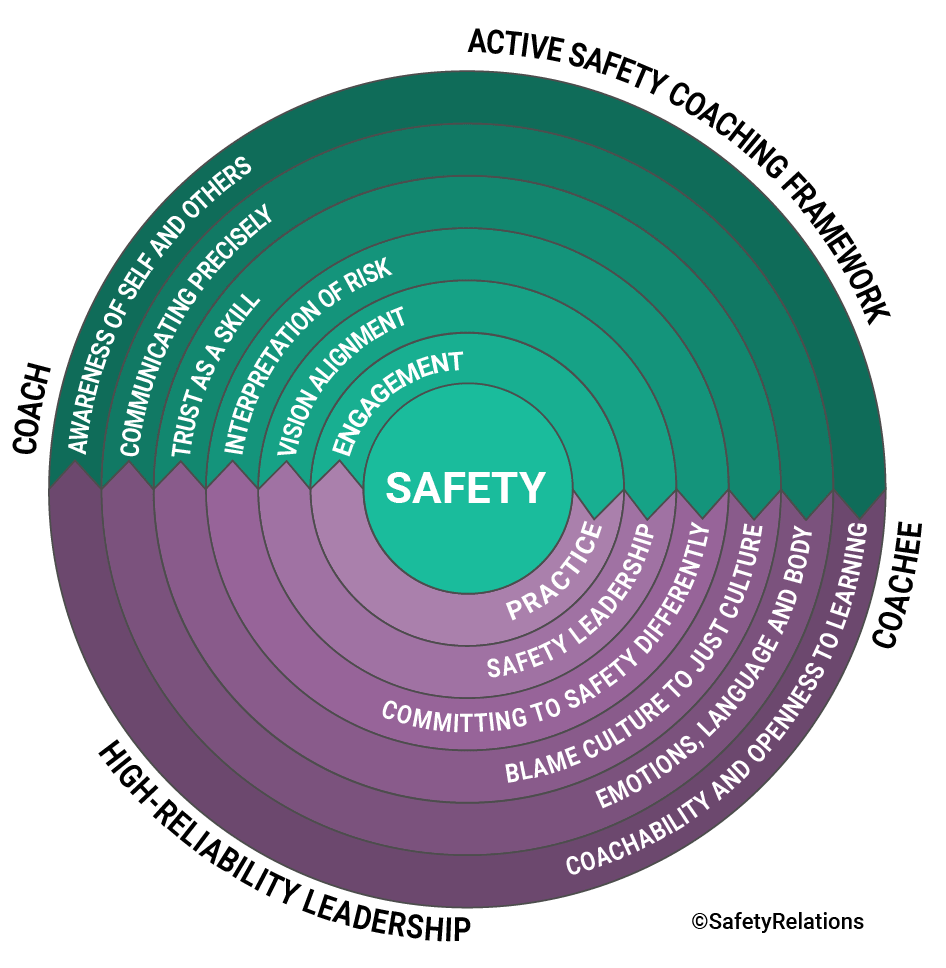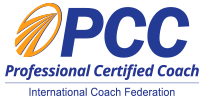Download PDF
We will send the PDF document with course details, schedule, and cost information by email. You can unsubscribe at any time.
6-Week Practice-Based Online Training Course to Develop Your Safety Coaching Skills

Safety Coaching involves helping employees see safety differently and developing new habits through practice. Being a safety leader means being responsible for declaring enhanced safety levels and enrolling followers to support your organization's vision. Through Safety Coaching, you can actively engage your team's whole being in your safety leadership and not just talking about it.
Want to become a great safety coach? Join our online course to develop the essential Safety Coaching skills you need.to improve your organization's safety culture.
Eliminate the barriers to prioritizing safety in your organization
Lead conversations that translate your safety policy into action
Create an atmosphere of trust and encourage reporting of incidents
Align the perceptions of risk across the organization
Reframe safety as a profit-center to gain management commitment
Win the hearts of workers to support your safety vision
Help employees eliminate their blind spots and make unbiased decisions
"Very proud to have recently completed my Certificate of Mastery in Safety Coaching with SafetyRelations. One of the BEST ONLINE COURSES I have ever done in the OHS field. It has taught me how to read, learn and recognize emotions, and showed me the importance of developing self-awareness, active listening, powerful questioning, coaching presence, coaching ethics and trust on a deeper level."
This program will introduce you to ACTIVE Safety Coaching, a framework designed specifically to generate safety performance. The six steps involved in this coaching framework are Awareness, Communication, Trust, Interpretation, Vision and Engagement.
There is a significant difference between someone “believing safety is important” and “being a safety leader." By attending this program, you will be able to work with your teams and make safety part of their "way of being.”

Course content
Module 1
Operators' cognitive biases and enemies of learning are critical factors that lead to poor safety decisions. In other words, they should be aware of their limitations and those of others to behave safely. Most importantly, such awareness should be available in every situation. In this module, you will learn how to help people align their perceptions of risk with your organization's acceptable level.
Module 2
One of the leading factors that hinder an organization's safety performance is employees not reporting incidents. You can't make improvements to safety without identifying hidden systemic problems. For that, one needs trust in management, pride in what they do, and dignity. This module will teach you how to create a Just Culture that acknowledges and rewards the reporting of incidents.
Module 3
One of the leading factors that hinder an organization's safety performance is employees not reporting incidents. You can't make improvements to safety without identifying hidden systemic problems. For that, one needs trust in management, pride in what they do, and dignity. This module will teach you how to create a Just Culture that acknowledges and rewards the reporting of incidents.
Module 4
One particular element that differentiates safety coaching conversations from safety advising is that it is non-judgmental. As a result, we can empathize with operators and understand the way they view risk. While the responsibility for changes that affect safety remains with the operator, we can get them to commit to specific, measurable, and time-bound goals and then follow up on them.
Module 5
If you want to make your organization's safety vision a reality, actions are required, and actions require clarity of what, when, how, how often, and with whom. Determining and helping your employees adhere to these is part of creating the shared vision. We usually give out messages like "safety first" or "zero accidents," which are descriptive conversations. As a coach, you must use generative language and speech acts that can drive action.
Module 6
Traditionally, a safety manager's responsibility has been assumed to be ensuring compliance. Therefore, he or she has often been perceived as a "safety-cop" by many. While this is part of the job, it is also the safety manager's responsibility to get buy-in from employees to support the organization's safety vision. In this role, safety coaching is an essential tool for you because its focus is on generating commitment rather than compliance.
Download the PDF to learn how this program can help you.


YOUR INSTRUCTOR
Dan is a Professional Certified Coach, coach trainer and author with more than 20 years of experience in coaching and training coaches. He has more than 8500 hours of coaching experience and has trained thousands of coaches worldwide. He has trained and coached safety leaders and teams from high-reliability industries such as Aerospace and Chemical Manufacturing. Dan’s specialty is developing the human and relational skills necessary to drive world class safety performance.

“
"I learned a lot of new things and certain things with a new interpretation, and I'm applying them every day in my work."

“
"I'm somewhat smitten with the principles learned in this training and espouse them to others whenever I can. Very useful learning."

OUR CLIENTS




$
999
Get in touch! Send us a message below!